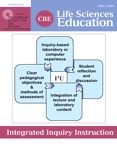The Rubrics Game
INTRODUCTION
Rubrics are such extremely useful tools for educators, yet their use has not been widely published or addressed in many education journals. Two books—one from 2005 and one very recent—address the topic in a very thorough way. Introduction to Rubrics may be considered the holy grail of the nature of rubrics and their usefulness. Along with an overall rationale for using rubrics, the how to and when to are addressed in both this book and A Complete Guide to Rubrics. The latter book goes into more depth and provides grade-specific and subject-specific approaches to the effective use of rubrics. The books complement each other, and reading them together provides a more holistic view of the subject. The main premise of these books is to help teachers become better graders of students’ work, as well more efficient time managers when grading numerous papers.

Introduction to Rubrics
Stevens and Levi, professors at Portland State University, have developed a primer on rubrics. They provide basic principles of what rubrics are and detail their standard uses. Additional topics include: general ways to construct a rubric, grading with rubrics, and some discipline-specific rubrics, such as how to construct a rubric for grading laboratory reports. The book is divided into seven chapters, all of them very short. The entire book is a quick read; it took me only a few hours in a single day to read it. The simple language and engaging writing style prepared me to read a more in-depth book on the subject. This book is effective and appropriate for educators with little or no experience using rubrics.
A Complete Guide to Rubrics
This book, written by a professor at Seton Hill University and now in its second edition, is a more thorough guide to the use of rubrics for diverse purposes in a wide range of settings. Beginning with a history of rubrics and assessment, along with a history of grades and grade inflation, the author makes a persuasive case for the inevitability of using rubrics to justify the grades that each one of us assigns to a variety of student work. A total of 12 chapters covers the construction and use of rubrics for a range of settings: primary and intermediate grades, middle or junior high school, high school, adult learning situations, and classes with special needs students. A very provocative chapter is “Student-Generated Rubrics,” which addresses a learner-centered philosophy in the classroom and discusses how to bring students into the assessment process. The author presents the idea as an opportunity to simultaneously get students involved and teach them about rubrics. I am not so sure this approach would work for many instructors, but the notion is interesting. The last couple of chapters address rubric-related topics, such as converting rubrics points into letter grades and assessing educational technology. The scope of this book is wide, and there is something for every educator, from the new teacher to the more experienced one. One clear message from the author is about the plasticity of rubrics. She states: “Rubrics are works in progress” (p. 156). I could not agree more; rubrics need to be revisited often. The book offers plenty of resources to be used according to our needs: sample rubrics, lots of references, and anecdotes to exemplify what might or might not work in our classrooms.
CONCLUDING REMARKS
Given the complexity of topics and multiple forms of assessment in science courses, these two books provide a toolkit for examining and/or improving our own evaluation systems. Both of these books provide a substantial number of references and case studies to help us decide the best way to use rubrics in our classrooms. One important lesson I learned while reading these books is the importance of reassessing our own assessment tools to improve student learning. The engaging writing style of both books makes developing and using rubrics seem like a game of trying diverse strategies and grading approaches—a game in which everybody wins.



